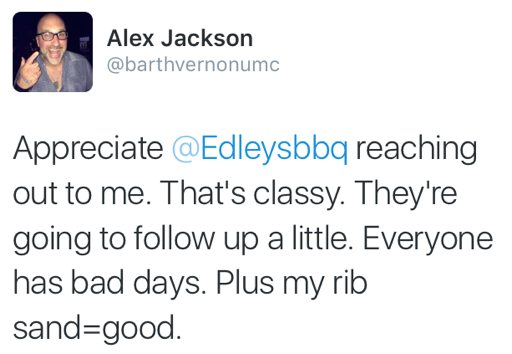Constantly refreshing social media newsfeeds
– it’s part of the job in the life of a social media coordinator. It’s always encouraging to see a post you worked so hard to craft begin to climb in engagement and reach, and even more rewarding when users begin to comment and share your content.
However, not every notification brings such joy.
One Friday afternoon in the office, all of our phones buzzed. Someone had taken to Twitter to express their experience with one of our clients, Edley’s Bar-B-Que, a popular local restaurant. The individual’s time in the establishment left a sour taste in his mouth, and he wanted to be sure that everyone knew about it.
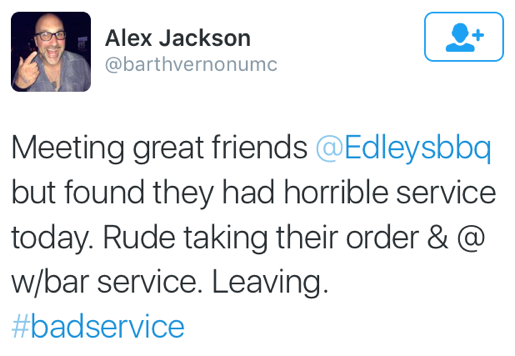
It wasn’t much longer until we were notified again that he had taken his business to a restaurant down the street, informing us that we should take notes on service from those guys.
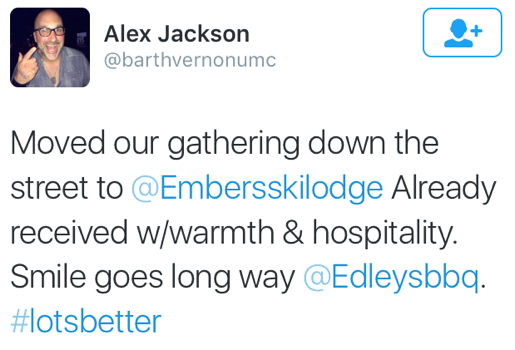
A lot of brands encounter this issue. Is the most effective course of action to reply to the tweet, bringing attention of the issue to a brand’s fan base, or to ignore and block the user?
The decision to ignore the problem is wrong. And here’s why.
1. Brand Identity
Our client has developed the brand of great food served with Southern hospitality. The sweet tea and corn bread tastes better if served with a smile and conversation. If we as the ad agency fail to maintain that level of respect online, then we are harming the business and the atmosphere that the restaurant has worked tirelessly to cultivate.
2. Right the Wrong
We replied to the first tweet, apologizing for the negative experience and explained to the individual that we denounce that type of behavior.
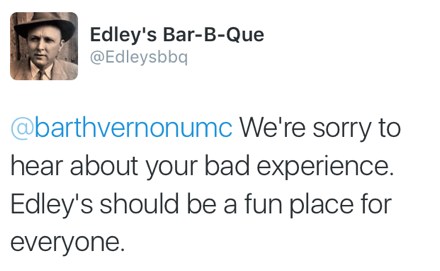
Since 140 characters was not enough to fully express our concern, we created another tweet, asking for the customer to direct message us so we listen to his full story.
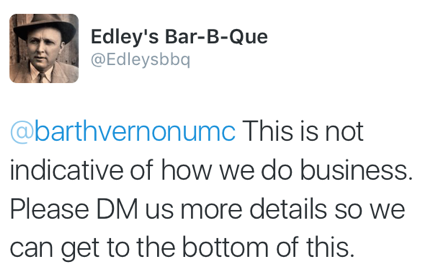
Turns out, he was upset that the employees came off as short, unfriendly, and did not grace him with the manners that true Tennesseans should have. After hearing the story, we passed along screenshots of the conversation to the restaurant’s management team, who then gave us the authority to give him a gift card to use in a future trip. The customer seemed to appreciate that we wanted to listen to his experience, and even offered to replace the negative tweets with positive ones! (And his tune was changed prior to offering up free food.) He was very appreciative of our time, and even more grateful for the gift.
3. Learning Experience
In this business, everyone is entitled to their opinion. We can’t expect everyone to like our brands 100% of the time. If we do not have experience in responding to our followers, then we are failing our clients in managing the community that has been established. What if we had just assumed this customer was an angry individual, and ignored his tweet? Or that he just wanted to get free money out of the situation? We wouldn’t have seen that he truly wanted to express his concern over the service at the restaurant, and wanted to hold the restaurant to a higher standard. (He even later admitted that his lunch was delicious.)
Community management is an important facet of keeping your brand alive on social media. Listen to your audience and respond. You never know what you’ll gain from one reply.
